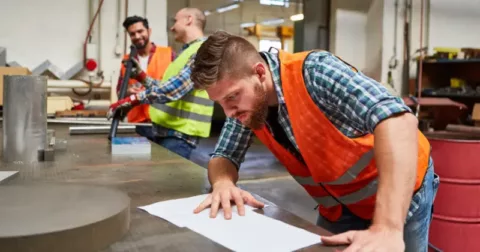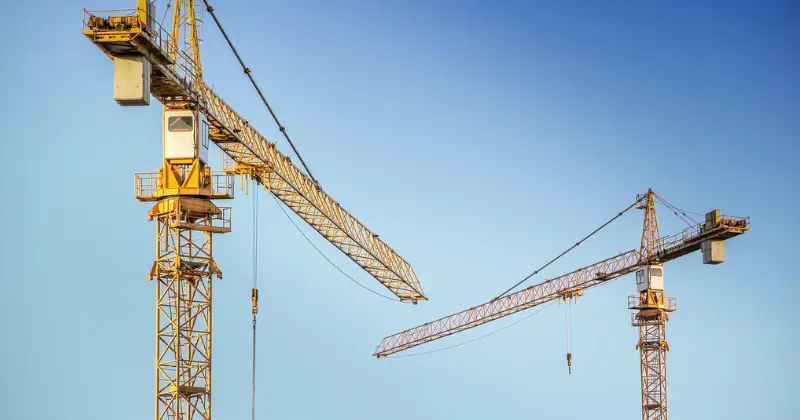11 mins read
Understanding the Basics of Preliminaries in Construction Projects

In the complex world of construction projects, every nail and brick is significant in the final product. However, materials, labor, and equipment are not the only elements that bring a construction project to life. There is a wide range of activities and processes that are not directly involved with the building phase but are equally important to the end result. We are talking about preliminaries.
Preliminaries or, as they are referred to in some territories, general conditions, are all the services, activities, processes, and costs that assist in project completion but are not directly related to the physical construction. These crucial elements, often overshadowed by more direct costs, can significantly impact the project’s overall budget, making managing them correctly a fundamental part of success.
Understanding preliminaries is the first step to getting them right. Neglecting these crucial costs can lead to budget overruns, affecting the project’s profitability. To help you avoid this, we’ve put together this insightful guide covering everything you need to know about preliminaries.
What Are Preliminaries in Construction?
Construction preliminaries, or “prelims,” are costs that are crucial to the completion of the project but are not related to a specific work section. Prelims can be fixed, one-off, or ongoing costs and are fundamental for accurately estimating the entire cost of a project.
The Chartered Institute of Building’s (CIOB) “New Code Of Estimating Practice” defines preliminaries as “…The cost of administering a project and providing general plant, staff, facilities, and site-based services and other items not included in the rates.”
Prelims are listed as a separate section in the bill of quantities (BOQ), and while not directly related to the physical building work itself, they are equally important to completing the project. Examples of preliminaries in construction include project management costs, scaffolding, on-site utilities, and insurance, among many others.
As mentioned earlier, preliminary costs can be fixed, ongoing, or one-off. For instance, a site inspection can be a one-off payment, while on-site utilities might be a monthly payment. These details must be clearly outlined when calculating preliminaries costs to prevent surprises from affecting the budget.
To make the process easier, preliminaries in construction contracts can be divided into three categories:
- One involves costs related to the site’s establishment, including access permits, land take, accommodation of welfare facilities, temporary access roads, etc.
- The second involves running costs like power, heat, and office rent.
- The third concerns handover costs, such as health and safety files, demobilizing offices, etc.
Who calculates construction preliminaries?
The general contractor (GC) is the primary person responsible for calculating prelims, as they possess the knowledge to determine the quantities and scope required to complete the project. For this purpose, the GC often hires a quantity surveyor or cost estimator, who uses their expertise to calculate the costs of preliminaries and advise on cost-effective solutions that benefit the budget.
The project owner might ask their team to provide initial input about preliminaries to include in the tender documentation and ensure all bidders understand the project’s logistical and operational requirements. However, for the above reasons, the GC has the final say on the actual costs.
How are preliminaries calculated?
The way preliminaries are calculated depends on the project’s nature. In bigger, more complex projects, prelims are divided into smaller items and priced based on a monetary amount. In smaller projects, prelims can be charged as a percentage of the total contract value. However, this might not be the best choice in all cases, as some projects have more preliminary costs than others, and the percentage might not be enough to cover all of them. For example, a public infrastructure project can have a lot of preliminary costs for regulatory compliance.
Preliminaries vs Preambles
Preliminaries and preambles are both fundamental documentation for efficient contract management. Because the names sound similar, they can be confused. However, they differ in scope and focus.
As mentioned, construction preliminaries are focused on the logistical and managerial aspects of a project. Their primary purpose is to ensure that all activities that contribute to the construction project, but aren’t part of the final structure, are accounted for. Preambles, on the other hand, are introductory paragraphs placed on the first page of the BoQ that help to understand the interpretation and application of the technical specifications. Their main purpose is to provide clarity and consistency to ensure the work is carried out as expected.
Preliminaries vs General Conditions
Construction preliminaries can also be confused with general conditions, but they are two different concepts. General conditions are the costs associated with the administration of the project, such as permits, licenses, and insurance, but they do not include the cost of physical items like scaffolding, personal protective equipment (PPE), signage, and disposable materials that might be found on a typical list of preliminary items in construction.
The use of these two terms also differs in various parts of the world. For example, the General Requirements section of the CSI MasterFormat guidance in the US closely aligns with the common definition of prelims in the UK. For this reason, the term “general conditions” can have a much broader meaning in the US, while the definition is usually limited to administrative costs in the UK. In fact, general conditions can be considered a subset of preliminaries in the UK.
The Importance of Preliminaries in Construction
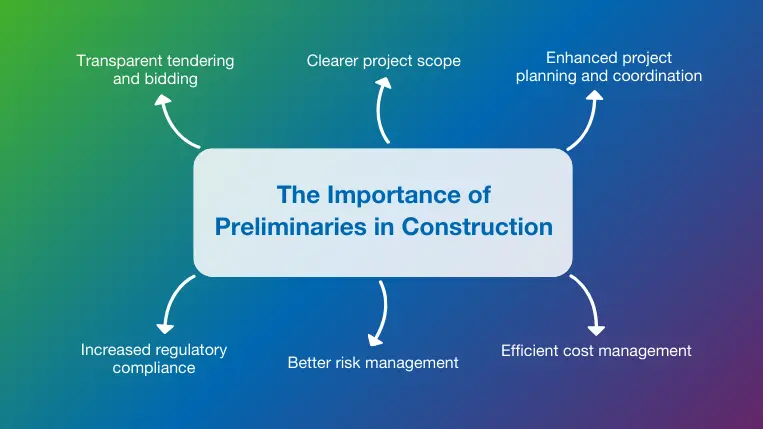
Construction prelims bring clarity to a project while ensuring all costs are accounted for. This mitigates the risks of legal disputes and provides a positive relationship between the owner and the contractor. For that reason, proper management of prelims is fundamental, as it contributes to the project’s overall success. Let’s explore some benefits in more detail below.
- Transparent tendering and bidding: Preliminaries play a crucial role in a construction project’s tendering and bidding process. They help contractors bid on the project considering the entire scope, not just the actual building elements, making their quote for the work more accurate and complete. Prelims also help the owner standardize the bidding process by ensuring all bidders price their work based on similar criteria.
- Clearer project scope: Contractor preliminaries outline the general requirements for a smooth project execution, including details about the site setup, temporary works, and health and safety processes, among other logistical and administrative considerations. This ensures that all the parties involved clearly understand the scope and their responsibilities, mitigating the risk of misunderstanding or disputes between the owner and the contractor.
- Enhanced project planning and coordination: In addition to providing insights about costs, prelims also include detailed information on site setup, including the placement of site offices, storage areas, and access routes. This allows for efficient planning and scheduling, prevents delays that can cost money and time, and increases construction productivity.
- Efficient cost management: Prelims provide detailed information about indirect costs for aspects of the project, related to, but not forming part of the final structure, therefore still fundamental to the project’s successful completion. This ensures that cost estimates and the project’s budget are more accurate by reflecting expenses from the entire project up to the smallest detail. Doing so also allows for better cost control in construction projects, as no unforeseen expenses will come up that can lead to a budget overrun.
- Better risk management: Prelims provide detailed insights into logistical and administrative activities and processes, allowing for efficient construction risk management strategies. Potential threats, issues, or risks can be identified and mitigated before the building work begins. Prelims can also include contingency plans on how to deal with unexpected situations like weather conditions or delays in the delivery of materials or equipment, helping to mitigate their disruption.
- Increased regulatory compliance: Prelims also include information about health and safety measures, safety training, site signage, insurance permits, environmental protections, and much more. Having that level of insight in a single document allows these measures to be implemented and ensures regulatory compliance across the project, making them fundamental for success.
Construction Preliminaries Breakdown: Key Components

There are different types of preliminaries in construction, each covering different expenses related to the project. As mentioned earlier, prelims might vary depending on the size, location, and nature of the project. Different construction project types have diverse requirements that might make prelims more extensive than others. Still, some common items are standard, including:
Site setup
This section of the preliminaries covers all activities, and the costs related to setting up the site for construction. This involves processes to improve site efficiency, like access roads, environmental compliance, and strategies to mitigate the risks of impacting adjacent structures, among others discussed below:
- Installing temporary barriers around the construction site to prevent unauthorized access and avoid security or safety issues.
- Installing temporary site offices, toilets, and rest areas for workers to ensure a functional and safe work environment on site.
- Erecting signs that indicate site rules, instructions, and directions to ensure workers and external visitors have clear guidelines for safety.
Project management and administration
This section of the prelims includes the costs related to project management and administration, including payments to management workers, reporting, quality assurance, documentation, and more.
- Allocating resources to pay project managers, site managers, supervisors, and other project stakeholders.
- Setting a professional construction reporting system to monitor progress and identify potential issues or improvements.
- Setting up systems to boost communication and collaboration between project stakeholders, such as investing in construction collaboration software.
- Coming up with a construction quality assurance strategy involving the payments for quality inspectors, testing, and other activities.
Health, safety, and environmental compliance
As its name suggests, this section covers all costs related to ensuring safety, health, and environmental regulations compliance. As discussed in a previous post, construction site accidents are not uncommon, and allocating resources to ensure safety across the board is paramount to avoid such accidents. Common costs related to this topic are:
- Acquiring PPE such as hard hats, high-visibility vests, safety goggles, and gloves, among many others. Providing PPE to workers not only ensures their safety but also ensures the project’s compliance.
- Installing first aid facilities on-site with trained personnel who can assist workers in case of a safety emergency to make workers feel protected, boost their productivity, and contribute to a safer work environment.
- Setting up systems for collecting and correctly disposing of waste to ensure materials are properly recycled.
- Ensuring procedures and necessary equipment are in place to prevent the pollution of water ways, damage to trees or their roots, etc. during construction.
- Installing dust suppression systems and noise barriers to minimize the impact of construction work on the surrounding communities and ensure compliance with regulations.
Insurance and bonds
Similar to the previous point, prelims also cover costs related to other legal requirements that protect the owner and the contractor and ensure the project is compliant. These include:
- Allocating resources for different types of insurance to protect all parties against financial risks coming from accidents or injury. This also covers workers’ compensation insurance in case of injury.
- Obtaining various permits for construction activities to ensure all legal and regulatory requirements are met and costly legal issues are prevented.
Temporary works
Temporary works are non-permanent structures or services necessary to support the building phase but are not a part of the final construction, which means they are removed once the project is finalized. Some common preliminary costs related to temporary works include:
- Erecting scaffoldings for workers to safely work at heights. Scaffoldings are necessary for bricklaying, painting, and installing windows or roofs, among other things.
- Constructing temporary roads and access paths to allow vehicles delivering materials or equipment, or transporting waste, to move through the site.
- Setting up temporary utilities like electric connections to power equipment, water supplies to mix concrete or cleaning, and drainage systems to prevent flooding that can affect the project schedule.
- Building temporary pedestrian bridges or walkways over excavations or uneven ground to allow workers to pass over safely.
- Erecting, utilizing, and dismantling tower cranes or other hoisting systems that enable materials to be transported to the upper floor of high-rise buildings.
Factors to Consider When Pricing Preliminaries in Construction
The content and price of preliminaries will vary depending on the project type. However, there are some key factors to consider that can make pricing prelims a bit easier and more accurate.
Nature of the project
The project type is fundamental to pricing preliminary work. Bigger projects will naturally incur more set-up costs than smaller projects. Likewise, commercial projects are more likely to require more regulatory and insurance-related expenses than residential projects. Therefore, it is a good strategy to look at preliminary pricing from an individual project perspective.
Site conditions
The site conditions are also key factors when pricing prelims. Some sites might have more restricted access that requires additional logistics resources. Sites in remote locations might incur additional expenses for electricity or water while sites in city centers may incur costs arising from the limited space to store materials and restrictions on the times they can be delivered to the site.
Local regulations
Local building codes, zoning regulations, and other region-specific legal requirements can make a project more difficult or expensive. This is an excellent example of why preliminary work is priced based on the project and not a fixed fee.
Economic factors
The current economic conditions of the area where the project will be carried out can also influence the price of preliminaries. For example, inflation makes the costs of resources more expensive.
Common Mistakes when Pricing Preliminaries in Construction
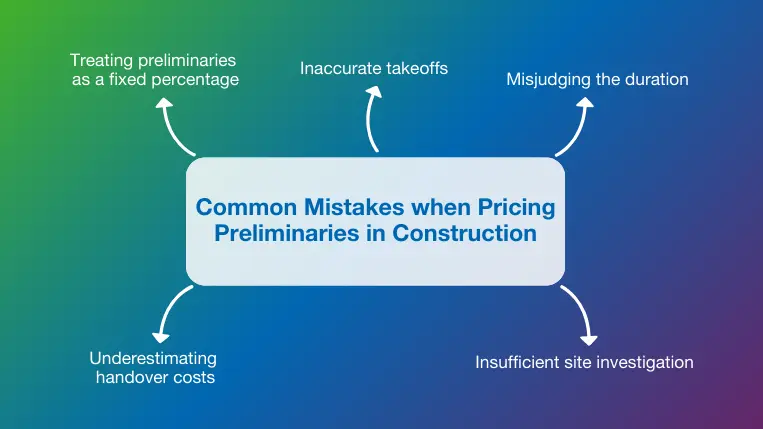
The list of preliminaries in construction can be as long (or longer than) the list of direct material, labor, and equipment costs, but the diverse and variable nature of prelims can make it easy to overlook important details or changes. Some of the common pricing mistakes include:
Treating preliminaries as a fixed percentage
Contingencies in construction are often calculated as a fixed percentage (5 – 10%) of the overall budget, but it can be difficult to simplify the calculation of prelims in the same way. Preliminaries are highly variable and project-specific, which makes them hard to predict, even when using similar projects as a baseline. Project size, complexity, and location all play a big part, but the actual administrative, site establishment, utility, and handover costs can be difficult to foresee, especially when scope changes extend the project timeline.
Therefore, the fixed percentage method can mask overruns by attempting to capture such a diverse set of costs in a single bucket. Instead, categorizing, listing, and pricing prelims individually throughout the project provides the necessary level of visibility and cost control.
Inaccurate takeoffs
Quantity takeoffs are used to produce accurate cost and quantity data for estimates, based on the expected material, labor, and equipment requirements. Since construction preliminaries do not include these items, the connection might not be obvious, but an incorrect assessment of these costs can also impact prelims in a significant way.
Underestimated resources can lead to delays that increase administrative, utility, and site support prelims, while overestimated resources can lead to logistical issues and waste, such as additional storage costs and material transport, that put more pressure on the supporting staff.
On the other hand, accurate takeoffs, using 2D drawings or 3D models to automatically calculate the precise quantity of each project element, streamline processes including procurement, planning, and budgeting, to reduce preliminary costs throughout the life of the project.
Misjudging the duration
No project begins by assuming a series of unforeseen events will cause the project duration to exceed expectations, but this is frequently the case. In fact, large projects often take up to 20% longer than expected, with an average schedule slippage of 20 months. This can have a huge impact on costs projected during the preliminary construction study, with all expenses required to run and manage the site increasing proportional to the project duration.
More accurate projections of the project timeline can be achieved using historical data, statistical methods, predictive analytics, and comprehensive risk assessments to ensure all tasks, material lead times, and other factors impacting the duration are evaluated appropriately.
Insufficient site investigation
Many construction preliminary costs are driven by the site itself, so insufficient construction site surveys and investigations upfront can lead to additional prelims that were not considered in the initial phases of the project. This includes natural or utility-based obstructions requiring engineering time and overhead to resolve, or soil issues calling for additional testing and analysis.
These unforeseen issues might also call for additional signage, barriers, or fencing to make access safer and more convenient while these problems are being resolved. Site issues can also cause delays that lead to extended demand for water, utilities, and other ongoing operational expenses.
Underestimating handover costs
When a project begins, handover activities can seem like something in the distant future, and they usually are. We do not always apply the appropriate level of research and analysis to project activities that don’t impact us today, but that can be a mistake when it comes to preliminaries. Tasks like file preparation, demobilizing temporary offices, and removing equipment and barriers might seem mundane, but they can become a source of hidden expenses when time is of the essence and resources to complete closeout work are limited.
Final Thoughts
As you learned throughout this post, construction preliminaries are vital to estimating project costs correctly and accurately. They also ensure the project is bid fairly and that all stakeholders work based on the same goals and information. Properly accounting for preliminaries can help create a more accurate budget, ensuring the project is completed successfully.
To safeguard success throughout the process and avoid leaving critical information out of your prelims, you can level up your performance using professional construction software solutions. Our versatile cost estimation, planning, and project control software, RIB Candy, provides resource-based estimating, on-screen quantity takeoff (QTO), and advanced forecasting capabilities needed to support an accurate and detailed bill of quantities. With Candy providing an interactive link between the BoQ, estimate, and schedule of work, preliminaries get the visibility and attention they deserve.
If you are ready to experience the power of professional construction estimating software developed by experts with decades of experience, get a free trial of RIB Candy today!
Get My Free RIB Candy Demo Now
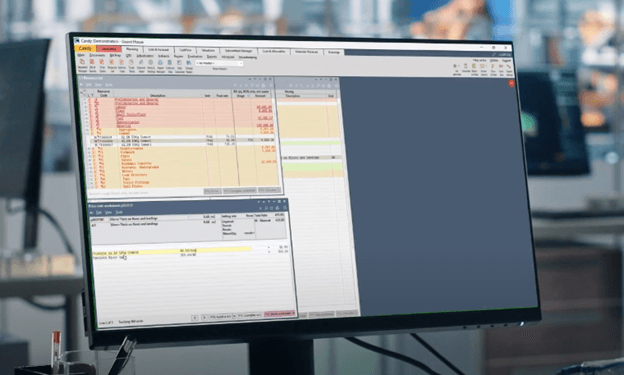
Most Recent
11 mins read
10 mins read
10 mins read
29 mins read
Blog Categories
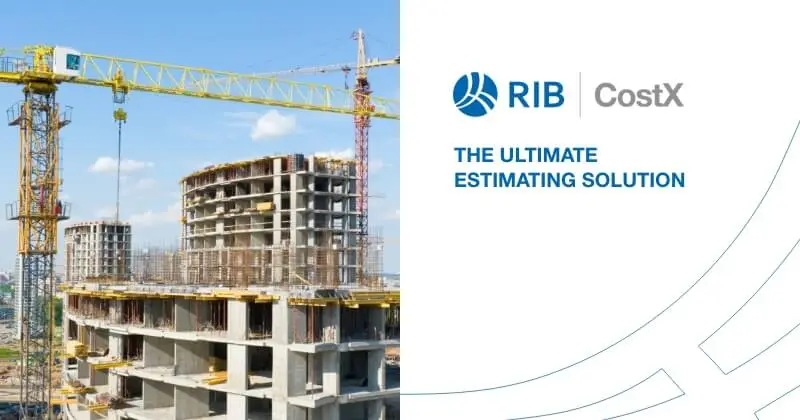
Ebook
